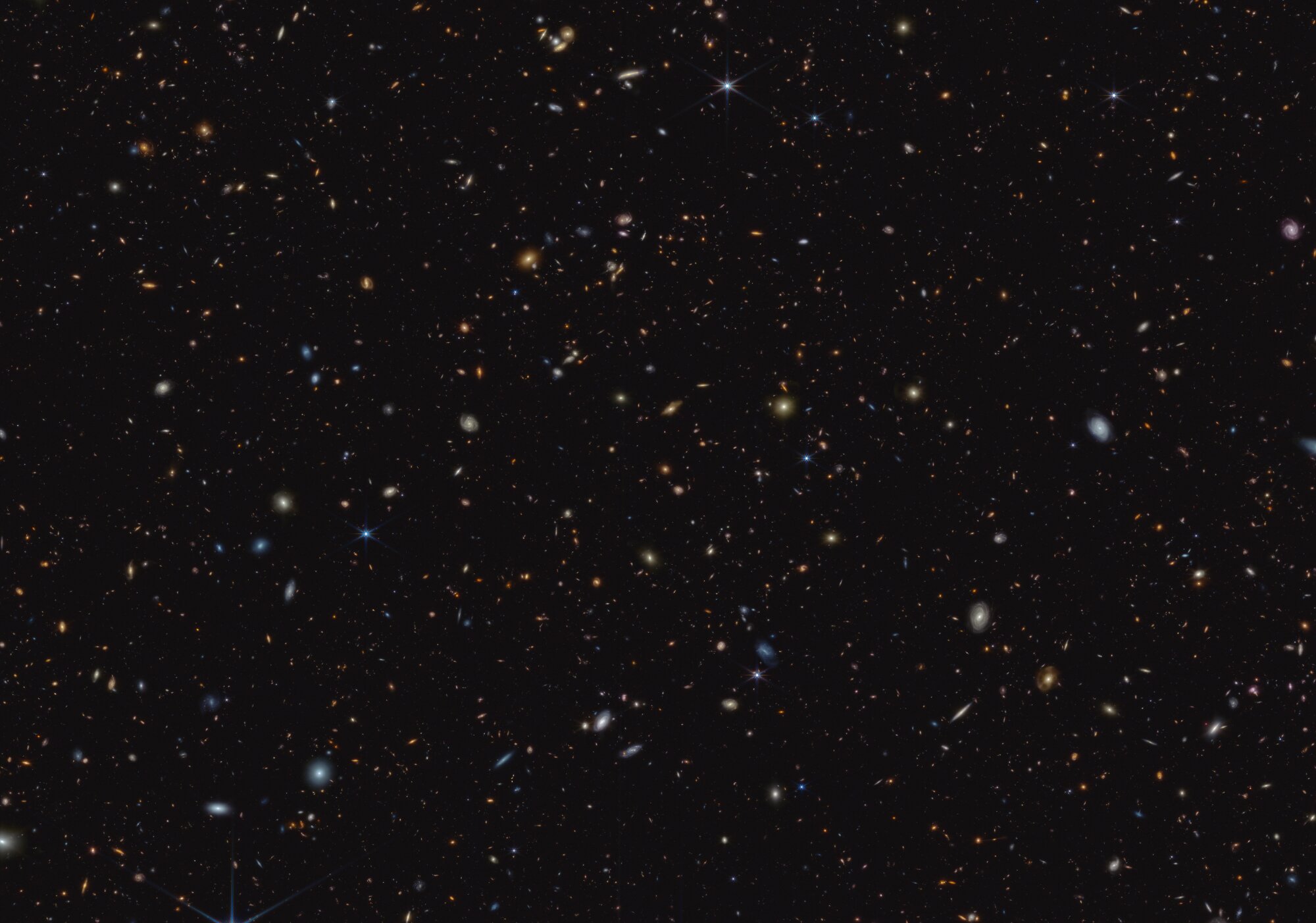
Among the fundamental questions in astronomy: How did the first stars and galaxies form? NASA’s James Webb Space Telescope provides new insights into this question. One of the largest programs in Webb’s first year of science is the JWST Advanced Deep Extragalactic Survey, or JADES, which will devote about 32 days of telescope time to detecting and characterizing faint, distant galaxies. While data is still coming in, JADES has already discovered hundreds of galaxies that existed when the universe was less than 600 million years old. The team also identified galaxies brimming with many hot young stars.
These results are reported in 242nd Meeting of the American Astronomical Society In Albuquerque, New Mexico.
“With JADES, we want to answer a lot of questions, like: How did the first galaxies collect themselves? How quickly did stars form? Why do some galaxies stop forming stars?” said Marcia Rickey of the University of Arizona in Tucson, co-leader of the JADES program.
star factories
Ryan Endsley of the University of Texas at Austin led an investigation of galaxies that existed between 500 and 850 million years after the Big Bang. This was a crucial time known as the era of reionization. For hundreds of millions of years after the Big Bang, the universe was filled with a gaseous haze that made it opaque to energetic light. A billion years after the Big Bang, the haze cleared and the universe became transparent, a process known as reionization. Scientists have debated whether active supermassive black holes or galaxies full of hot young stars are the main cause of reionization.
As part of the JADES program, Endsley and his colleagues studied these galaxies using Webb’s NIRSpec (Near Infrared Spectrometer) instrument to search for signatures of star formation — and they’re finding them in abundance. “Almost every galaxy we detect shows these extraordinarily strong signals of emission lines that indicate intense recent star formation. These early galaxies were very good at forming massive hot stars,” Endsley said.
These massive, bright stars pump out torrents of ultraviolet light, which have turned the surrounding gas from opaque to transparent by ionizing atoms, removing electrons from their nuclei. Because these early galaxies had such a large number of hot, massive stars, they may have been the main drivers of the reionization process. The subsequent recombination of electrons and nuclei results in characteristically strong emission lines.
Endsley and colleagues also found evidence that these young galaxies underwent periods of rapid star formation interspersed with quiet periods when fewer stars formed. These outbursts and initiations may have occurred when galaxies captured clumps of the gaseous raw material needed for star formation. Alternatively, because massive stars explode rapidly, they may periodically inject energy into the surrounding environment, preventing gas from condensing to form new stars.
Early universe revealed
Another component of the JADES program involves searching for the oldest galaxies that existed when the universe was less than 400 million years old. By studying these galaxies, astronomers can explore how star formation in the early years after the Big Bang was different from what we see in present times. Light from distant galaxies is stretched to longer wavelengths and redder colors through the expansion of the universe – a phenomenon called redshift. By measuring the redshift of a galaxy, astronomers can learn how far away the galaxy is and, therefore, how long it existed in the early universe. Before Webb, there were only a few dozen galaxies observed above a redshift of 8, when the universe was less than 650 million years old, but JADES has now discovered nearly a thousand of these extremely distant galaxies.
The gold standard for determining redshift involves looking at a galaxy’s spectrum, which measures its brightness in a myriad of closely spaced wavelengths. But a good approximation can be determined by taking pictures of a galaxy using filters that each cover a narrow range of colors for just a few measurements of brightness. In this way, researchers can determine distance estimates for several thousand galaxies at once.
Kevin Hainline of the University of Arizona in Tucson and colleagues used Webb’s NIRCam (Near Infrared Camera) instrument to take these measurements, called photonic redshift, and identified more than 700 candidate galaxies that existed when the universe was between 370 million and 650 million years old. . year. The sheer number of these galaxies was far beyond expectations from observations made prior to Webb’s launch. The observatory’s remarkable resolution and sensitivity allow astronomers to get a better view of these distant galaxies than ever before.
“Previously, the first galaxies we could see seemed like little smudges,” Heinlein said. “However, those smudges represent millions or even billions of stars in the early universe.” “Now, we can see that some of them are actually extended objects with visible structure. We can see clusters of stars being born only a few hundred million years after the beginning of time.”
“We find that star formation in the early universe is much more complex than we thought,” Ricke added.

“Web maven. Infuriatingly humble beer geek. Bacon fanatic. Typical creator. Music expert.”





More Stories
Scientists confirm that monkeys do not have time to write Shakespeare: ScienceAlert
SpaceX launches 23 Starlink satellites from Florida (video and photos)
A new 3D map reveals strange, glowing filaments surrounding the supernova